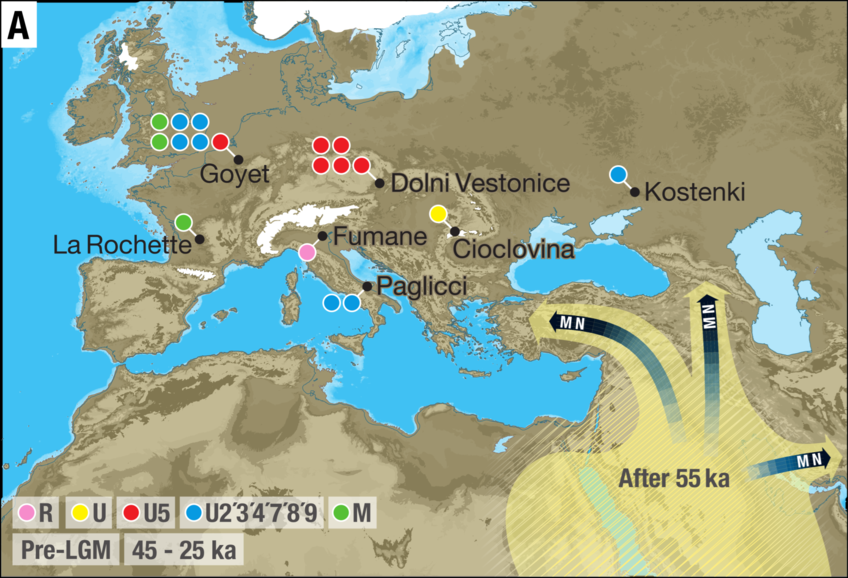Europe’s Population Dramatically Changed at the End of the Last Ice Age
Genetic analyses shed new light on early European population dynamics

The study supports a single and rapid dispersal of all non-Africans populations around 50,000 years ago not only across Asia but also into Europe.
Genetic information about early modern humans, who lived for 35-40,000 years as hunter-gatherers in Europe, is scarce and their population structure and dynamics are almost unknown. Using molecular and bioinformatic techniques researchers from the Max Planck Institute (MPI) for the Science of Human History in Jena and Tuebingen University in Germany, together with an international team of collaborators,were able to reconstruct complete maternally inherited mitochondrial DNA (mtDNA) genomes of 35 hunter-gatherers who lived in Italy, Germany, Belgium, France, Czech Republic and Romania between 35,000 and 7,000 years ago.
Analysis of these ancient mtDNAs unexpectedly revealed that three individuals from before the Last Glacial Maximum (LGM) - the coldest period in the last Ice Age – that were excavated in present-day Belgium and France belong to a type of mtDNA called haplogroup M. “I couldn’t believe it. The first time I got this result I thought it must be a mistake, because in contemporary Europeans haplogroup M is effectively absent, but is found at high frequency in modern Asians, Australians and Native American populations.” reports Cosimo Posth of Tübingen University, the lead author of the study. When the LGM began around 25,000 years ago, hunter-gatherer populations retreated to a number of proposed refugia in the south of Europe. The researchers suggest that haplogroup M may have been lost due to the reduction in population size, which later re-expanded across Europe when the climatic conditions turned more favorable for humans.
